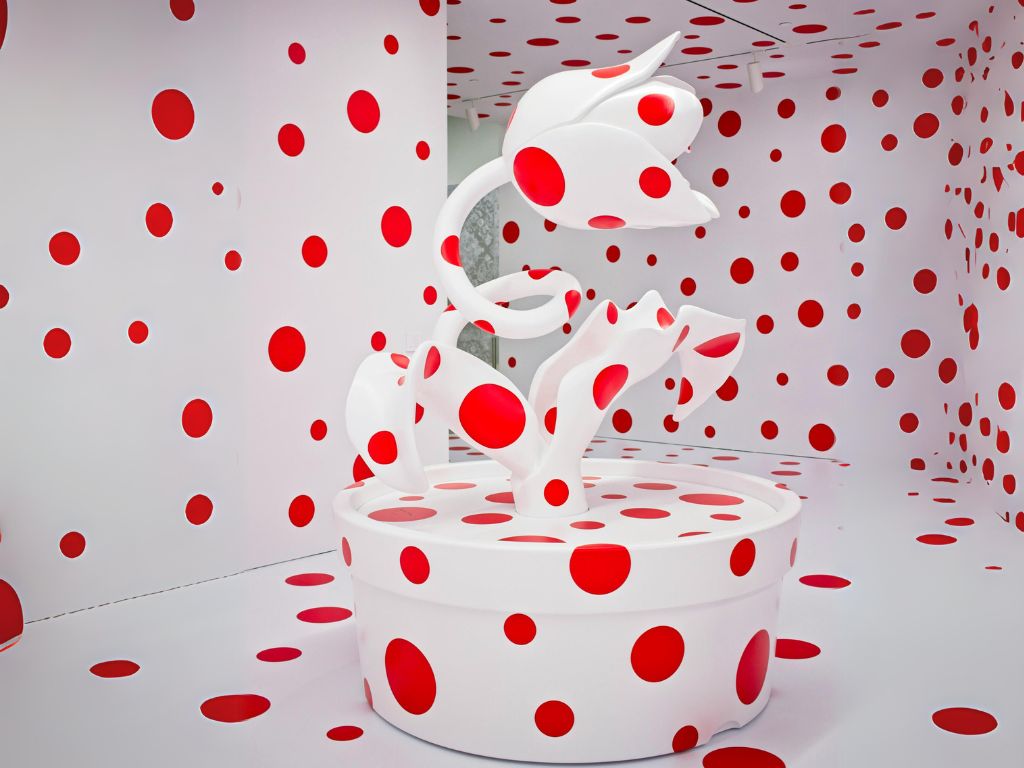
Yayoi Kusama is celebrated for her unique artistic style, characterized by her distinctive use of polka dots and immersive infinity installations. She began painting as a child, often depicting hallucinations involving fields of dots. Kusama's work spans various mediums, including painting, sculpture, performance art, and installations, reflecting styles from pop art to minimalism. Moving to New York City in 1957, she quickly became a central figure in the avant-garde scene with her "infinity net" paintings and later transitioned to pop art and performance art. Her work Infinity Mirror Room—Phalli’s Field, explored themes of sexual anxiety and employed mirrors to create infinite planes. Kusama's provocative performances often included public nudity and challenged societal norms, garnering significant media attention.
In 1973, Kusama returned to Japan and continued to create art, poetry, and fiction. Her international resurgence began with exhibitions in 1989, leading to major retrospectives at prominent institutions, including the Museum of Modern Art and the Whitney Museum of American Art. Kusama represented Japan at the 1993 Venice Biennale and received the Praemium Imperiale prize in 2006. Her Infinity Mirrored Rooms installations, featuring mirrored spaces with colored lights, have become iconic. She opened a museum in Tokyo, solidifying her legacy as one of the most influential contemporary artists.
